The 11 Most Aloof Dog Breeds [with Photos]
Dogs come in all shapes, sizes, and personalities. While some breeds are known for being clingy and always wanting to be a part of the action, others prefer their independence. If you’re someone who values alone time and a bit of distance from your furry friend, an aloof dog breed might be just what you’re looking for.
It’s time to dive into the world of independent dogs and discover the 11 most aloof dog breeds, perfect for those who appreciate a little extra personal space.
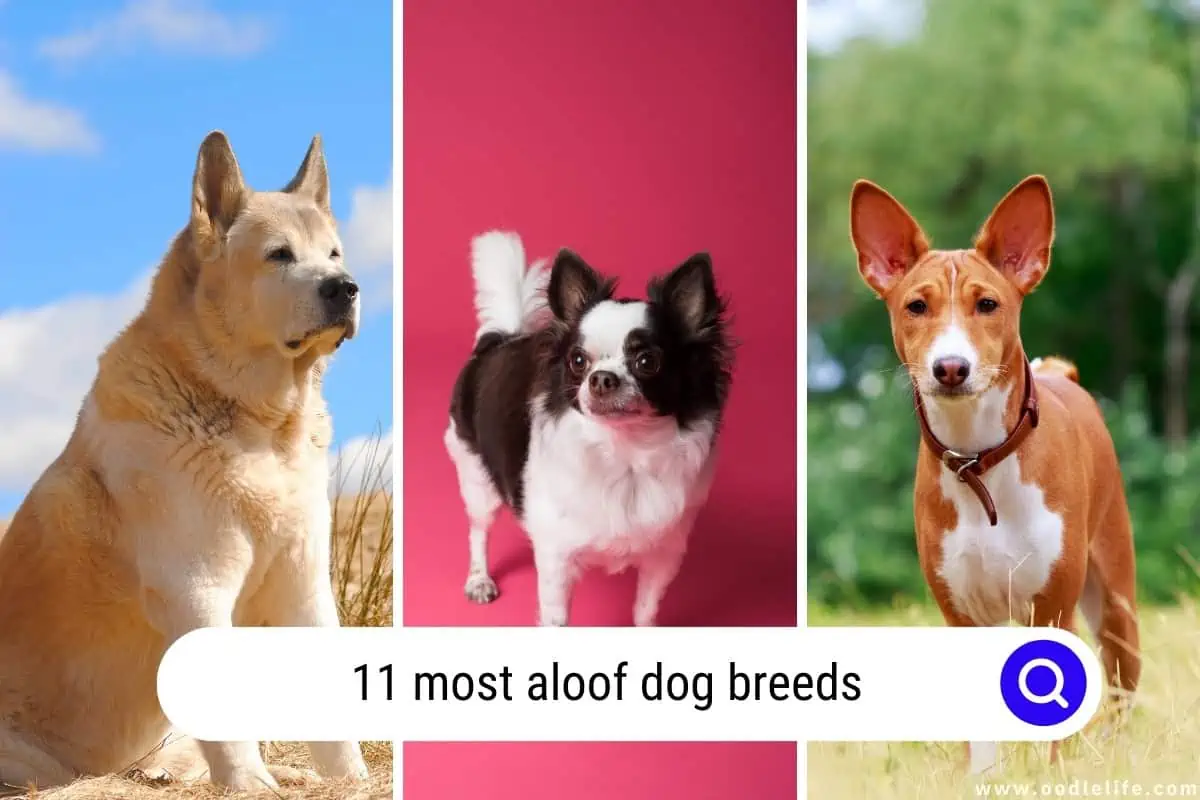
Aloof dog breeds typically prefer to make their own decisions and aren’t as concerned with earning your praise or trying to please you all the time. Imagine having the cool and nonchalant attitude of a cat combined with the loyalty and low-maintenance factors of your best canine pal. These dogs can spend time on their own without much of a fuss, which is great for busy or introverted dog owners.
From the regal Pharaoh Hound to the sturdy Basset Hound, we’ll be exploring the varying characteristics and unique traits of these wonderfully independent dogs. Get ready to embrace the idea of an autonomous four-legged friend who’ll offer companionship without smothering you. So, buckle up and let’s get acquainted with these peculiar yet lovable aloof dog breeds.
The 11 Most Aloof Dog Breeds
Akita
The Akita, a large and powerful breed, is known for its reserved nature. They may not crave attention or cuddles, but they’ll always be loyal to their family.
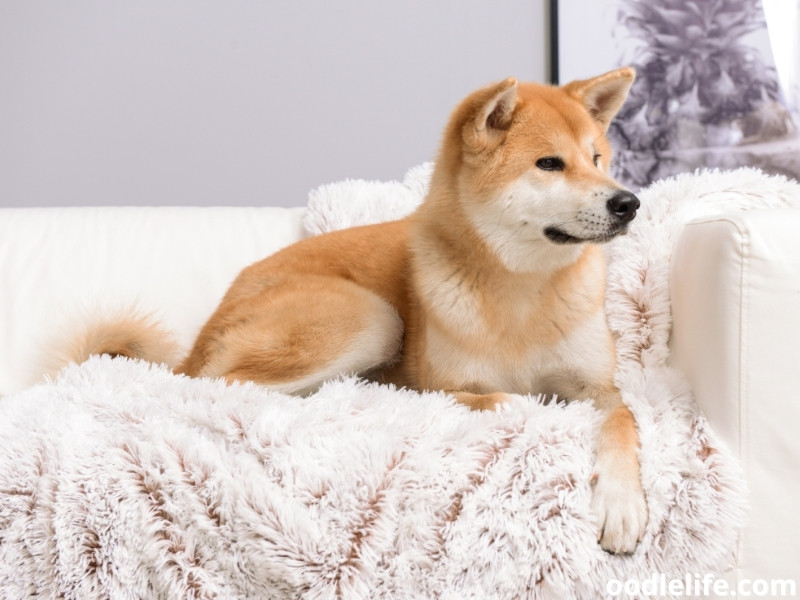
Shar-Pei
The Shar-Pei is a Chinese breed with wrinkly skin, which also happens to be somewhat independent. While they can be devoted to their families, they don’t necessarily need constant affection.
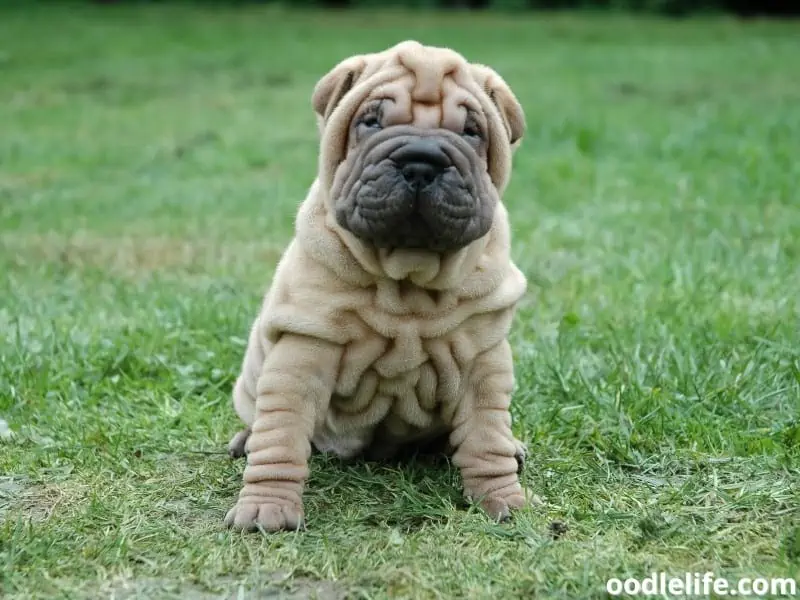
Chihuahua
Don’t let their tiny size fool you – Chihuahuas are fiercely independent! These little dogs are known for being a bit standoffish, making them one of the most aloof dog breeds.
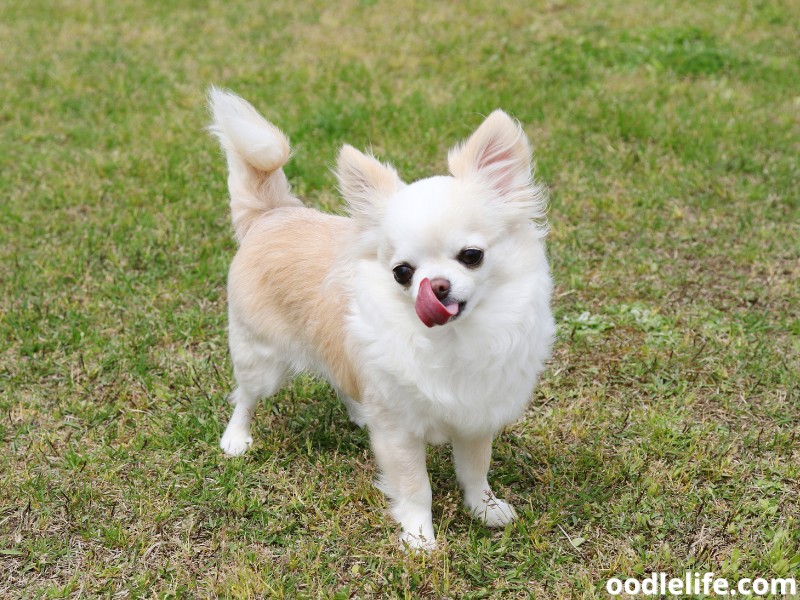
Greyhound
Greyhounds are famous for their speed, but few know about their aloof personality. These elegant dogs like their personal space and aren’t overly clingy.
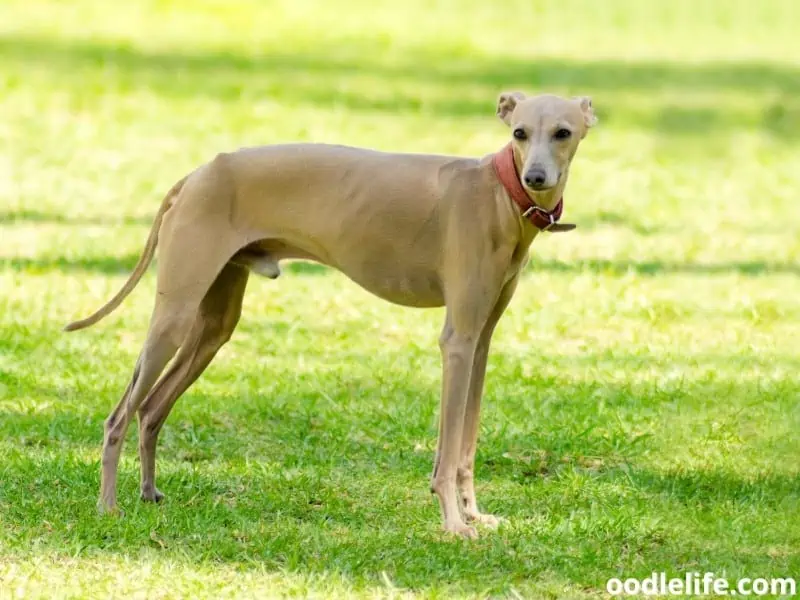
Basenji
The Basenji is one curious and intelligent breed. They’re known for their independence, but if you’re looking for a quiet dog, they might be perfect – they don’t bark!
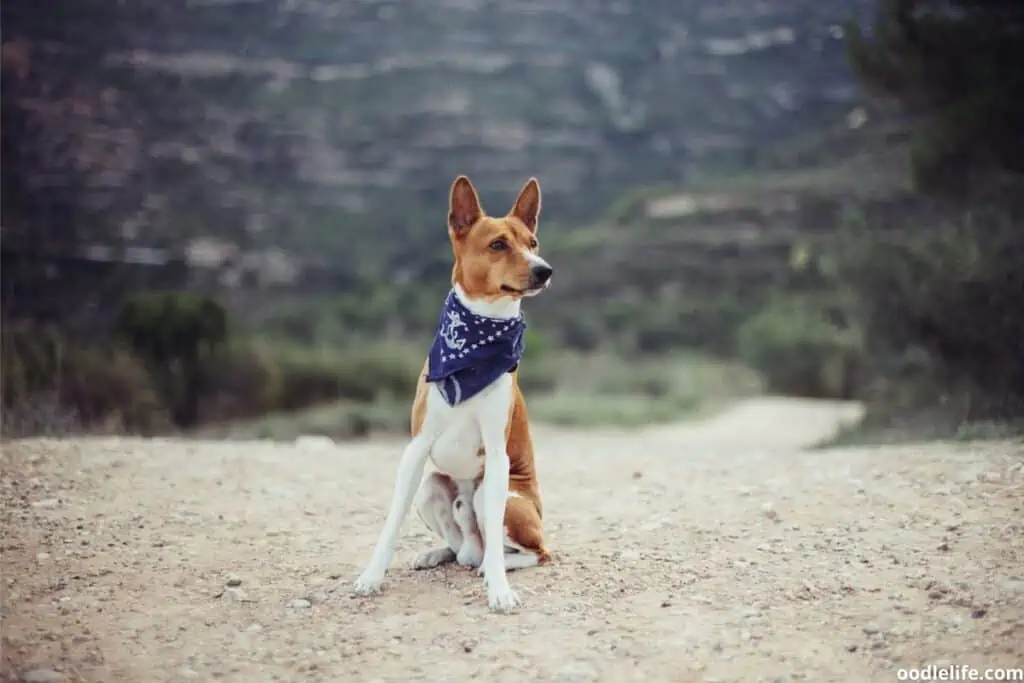
Maltese
These fluffy dogs have a lot of love for their families, but they can be pretty independent. The Maltese enjoys its alone time, making it one of the most aloof toy breeds.
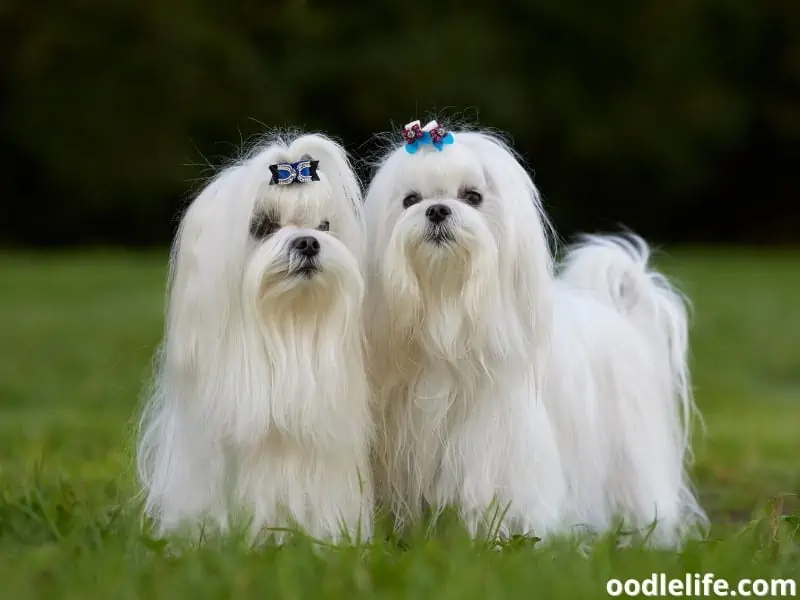
Chow Chow
With their lion-like appearance, Chow Chows are also known for their independent spirit. They’re not much for cuddling, but they make loyal, protective companions.
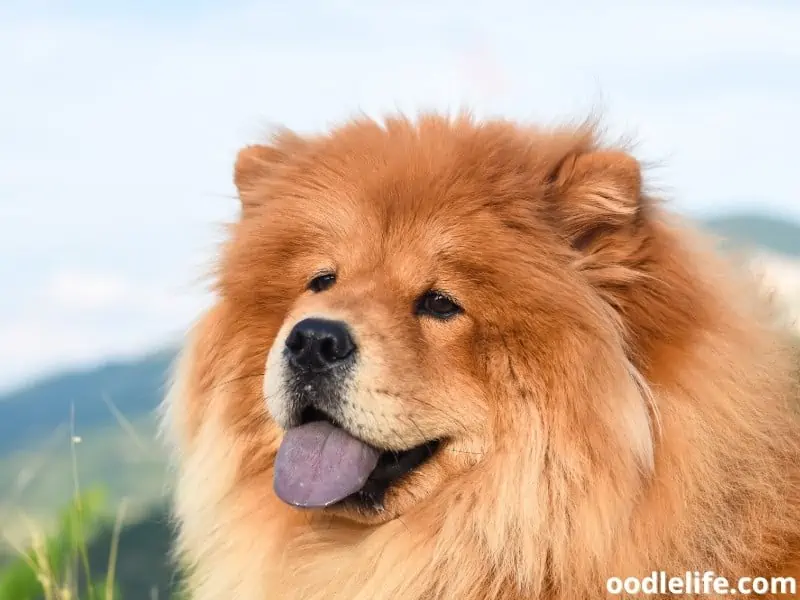
Afghan Hound
Elegant and regal, the Afghan Hound has a strong independent streak. They don’t mind keeping their distance, and their high prey drive may make them a bit more challenging to train.
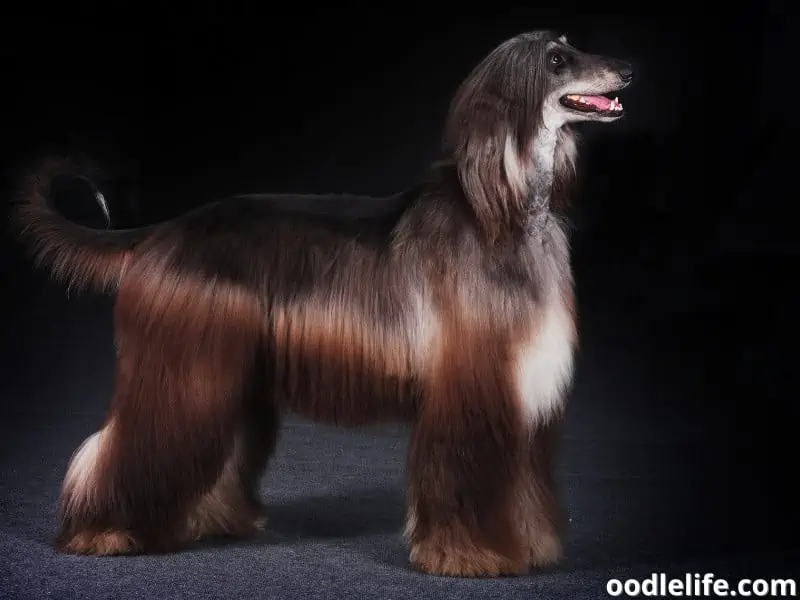
Shiba Inu
The Shiba Inu might be small and fox-like, but it has a big personality. Known for being somewhat stubborn, these dogs are fiercely independent and self-sufficient.
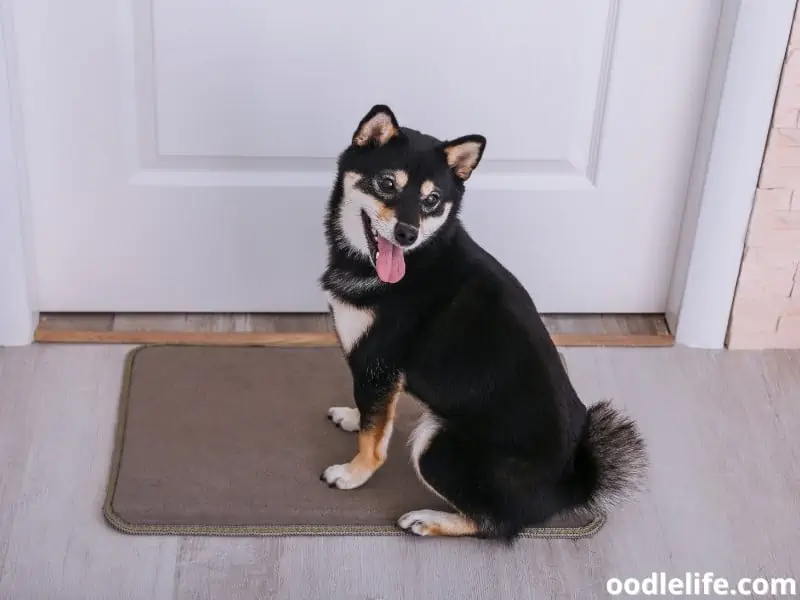
Borzoi
The Borzoi, a Russian breed, is built for speed and grace. They may appear quiet and gentle, but they are also known for their independence and will not always come when called.
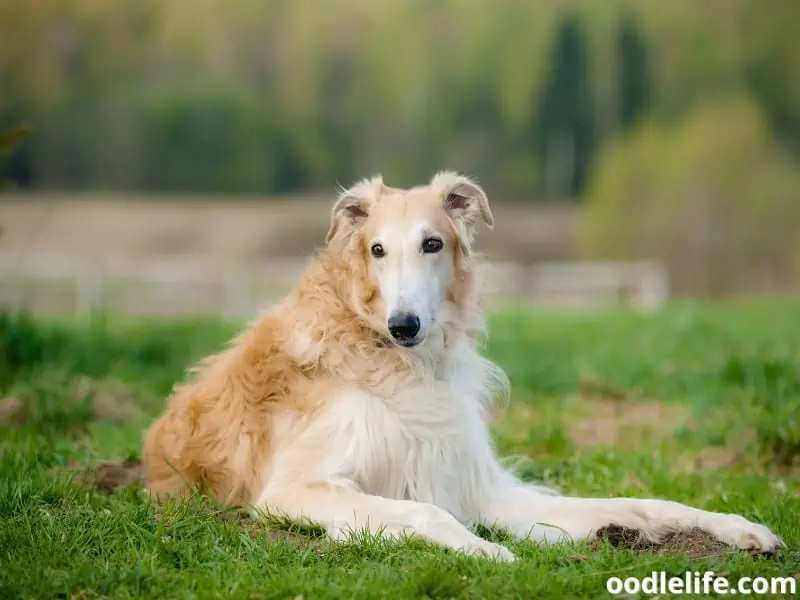
Alaskan Malamute
The Alaskan Malamute is a powerful and hardworking breed. Despite their strength and energy, these dogs are quite independent and not the biggest fans of cuddles – they’d rather be off exploring their surroundings!
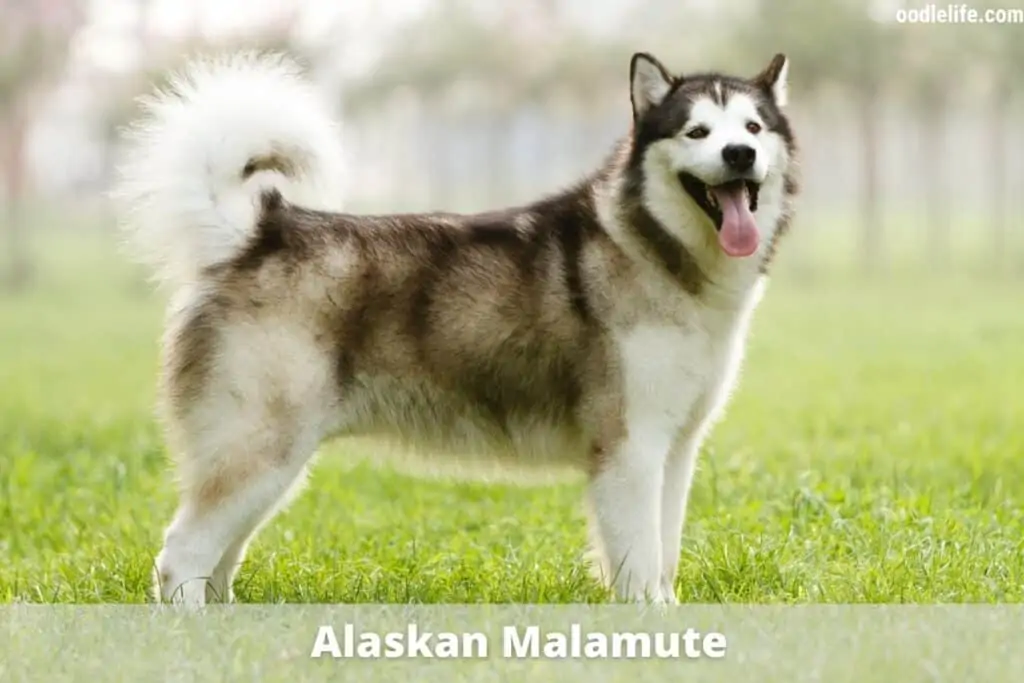
In this section, we’ve covered 11 of the most aloof dog breeds, from small Chihuahuas to large Alaskan Malamutes. Each of these breeds has its unique qualities, but they all share an independent nature, making them stand out from their canine counterparts.
Characteristics of Aloof Dog Breeds
Aloof dog breeds have several key traits that set them apart from their more affectionate counterparts. These dogs are often known for their independence, intelligence, and unique ways of displaying loyalty.
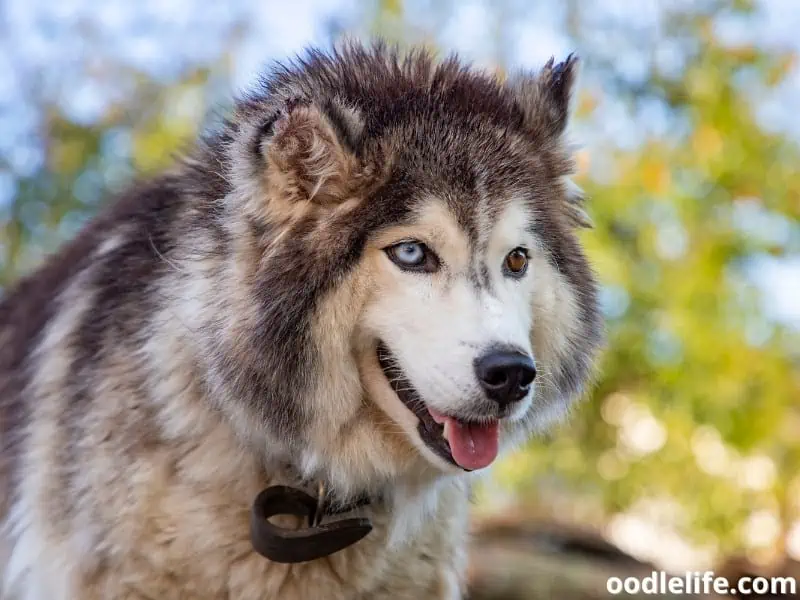
Independent dogs have a strong mind of their own. They don’t require constant attention and can handle being left alone for extended periods. Some examples of independent breeds include the Greyhound, Malamute, and Husky.
Their favorite pastime might be playing hard-to-get during a game of fetch.
Their intelligence shouldn’t be underestimated, and getting one to follow commands can be an interesting challenge for their human counterpart. These dogs are mental powerhouses and might invent alternate uses for your shoes if they don’t find the assigned tasks engaging enough.
Despite their seemingly detached demeanor, these breeds can be very loyal. The Anatolian Shepherd and Great Pyrenees are prime examples. However, their loyalty might look a little different from what we expect.
They won’t lay on your feet, but you can bet they’ll be keeping an eye on suspicious squirrels invading your yard.
These dogs might give off the impression that they’re not overly affectionate, but that doesn’t mean they don’t love their humans. They simply show it in different ways. A Berger Picard, for instance, may not be a prolific snuggler, but you can find them sticking close to their favorite person during a brisk walk in the park.
Ironically, their aloofness might be a blessing when hosting a dinner party. Your guests won’t have to worry about being smothered by a drooling canine hug machine as they munch on hors d’oeuvres.
So, if you’re in the market for a dog that won’t demand your attention 24/7, has a healthy dose of self-reliance, and shows occasional bursts of enthusiasm for a good romp or head-scratch, the aloof dog breed might be the perfect companion for you.
Finding the Right Breed for Your Family
When considering an aloof dog breed, it’s essential to think about your family dynamics and lifestyle. Aloof dogs may not be the best choice for some families, as they usually crave independence and may not exhibit the same level of love and bond as other more affectionate breeds. However, these dogs can still make great companions if you find the right one.

For example, if you’re looking for a family dog that enjoys cuddling and being loved by all members of the family, you may want to consider breeds such as the Golden Retriever or Labrador Retriever. These dogs are known for their friendly, loving nature and strong bonds with their families. In fact, it’s hard not to fall in love with these giant, goofballs of fur.
If your family is more of the adventurous type and you’re seeking a dog with an independent streak, the German Shepherd may be a good fit. While they’re not as aloof as some other breeds, German Shepherds still have an independent side that appreciates room to roam and requires mental stimulation. However, they’re also incredible protectors and, when properly socialized, make good family dogs.
Picture a strong, silent protector that occasionally enjoys a game of fetch.
Now, we’re not saying every aloof breed is like a cat in a dog’s body, but sometimes it feels that way! Some of the most aloof breeds like the Afghan Hound, prefer to maintain a sense of elegance and regality, with a silly side that pops up occasionally. They are like the supermodels of the dog world: stunning, sophisticated, and sometimes too cool to care.
Remember, each dog is an individual, and while generalizations about breeds can be helpful, it’s essential to consider the individual dog’s personality and temperament. Who knows, you might just find the perfect aloof breed that defies stereotypes and fits seamlessly into your family.
So, when searching for the perfect pooch to join your family, weigh the pros and cons of both affectionate and aloof dog breeds. Keep in mind your family’s needs, lifestyle, and preferences, and you’ll be well on your way to finding a four-legged companion that just “clicks” with your family dynamic, whether it’s a huggable Golden Retriever or a majestic Afghan Hound who occasionally lets you in on their sillier side.
Training and Socialization
Training and socializing aloof dog breeds can be a bit of a challenge due to their independent nature. So, it’s essential to approach these tasks with some creativity, patience, and a good sense of humor.
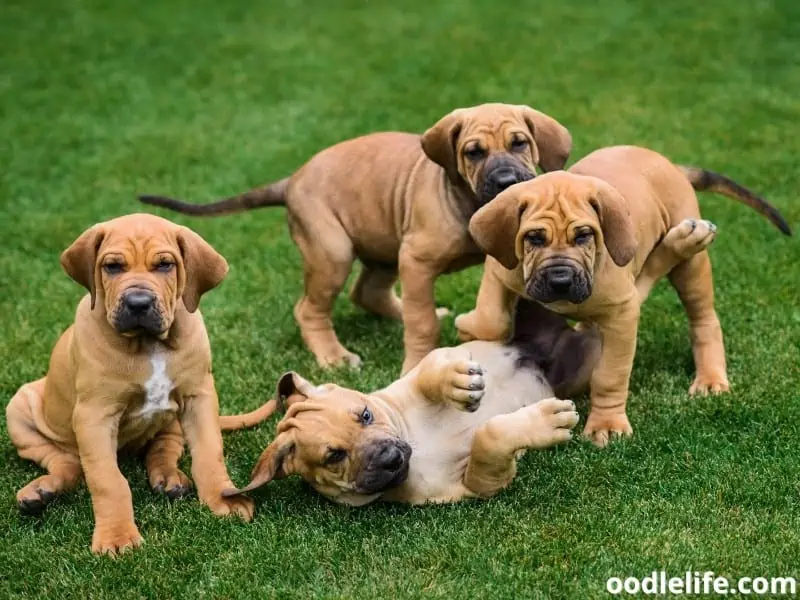
Firstly, it’s vital to start socialization early in a dog’s life. This helps them become more comfortable and confident in various situations, such as meeting new people and encountering other animals. Keep in mind that each dog breed might have slightly different requirements when it comes to socialization timing.
For instance, Akitas, known for their protective instincts, need to be socialized during their early weeks to ensure they develop a good relationship with their family and others.
When it comes to training, it’s crucial to use positive reinforcement techniques for these independent dog breeds. This means rewarding them with treats, praise, or their favorite toy when they display desirable behaviors. Remember, patience is key as some aloof dogs, like the Chinese Shar-Pei, tend to prioritize their independence over obedience.
Here are some tips to make training and socialization more effective for aloof dog breeds:
- Stay consistent with your training methods and schedule.
- Introduce your dog to various environments, people, and other animals, but remember not to overwhelm them.
- Encourage playtime with other dogs and use this as an opportunity to reinforce good behavior.
- Address any signs of fear or anxiety immediately, as these can hinder the socialization process.
Since every dog is different, it’s a good idea to tailor your training and socialization techniques according to your specific breed’s needs. For example, the Basset Hound is known for being stubborn and independent, so you may need to be more assertive during your training sessions.
In conclusion, training and socialization can be a challenging yet rewarding process for both you and your aloof dog. With a bit of creativity, perseverance, and a dash of humor, you’ll likely find success in nurturing a well-behaved and confident furry companion! Remember, even the most independent dogs have a goofy side, so enjoy the journey, and don’t forget to have fun along the way.
Exercise and Living Conditions
When it comes to exercise, aloof dog breeds may surprise you with their varied needs. While some may be content with a daily walk around the block, others might require more intense forms of exercise to maintain their majestic appeal.
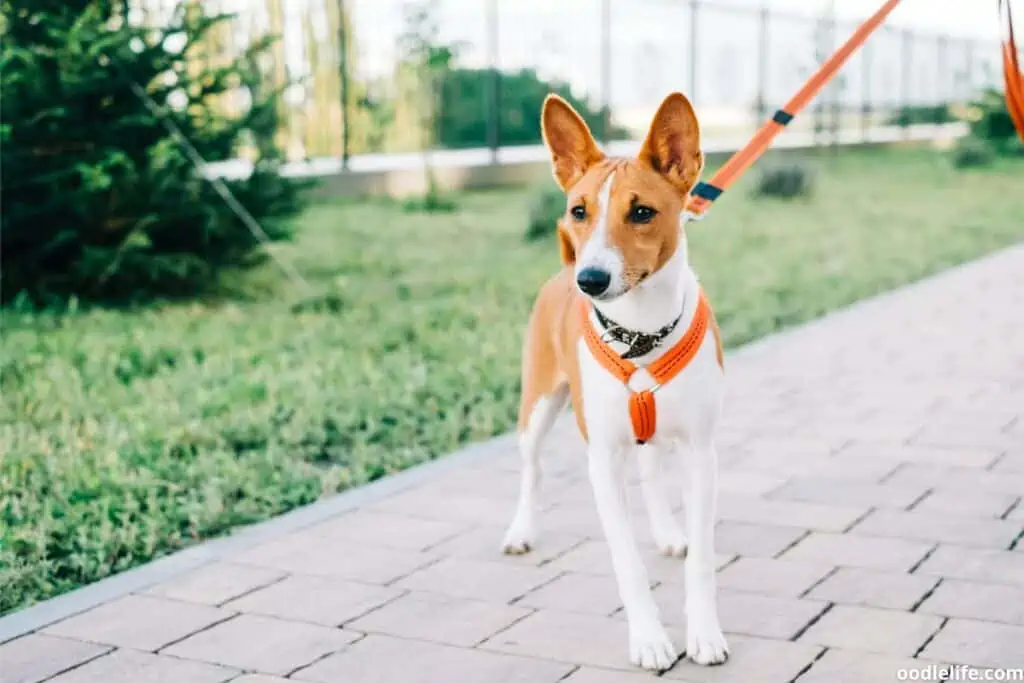
For example, the Afghan Hound cherishes its independence, but that doesn’t mean it can laze around on the couch all day. These posh pups need a good amount of exercise to keep their luxurious locks looking fabulous. A brisk walk or a game of fetch would be perfect for making sure their strut stays flawless.
If you’re living in an apartment, finding the right aloof dog breed is essential. The Tibetan Terrier, with its shaggy coat and adaptable nature, can be a great fit for apartment dwellers. These dogs do need at least an hour of exercise each day, so make sure to set aside some time for fun activities like playing tug-of-war or visiting your local dog park.
Not only will this keep them happy, but it will also give your neighbors a chance to admire their regal presence.
On the other hand, some aloof dog breeds come with a high prey drive, like the Pharaoh Hound. This trait may make off-leash playtime a bit tricky, as their desire to chase squirrels and birds might lead them to play a game of “spot the dog” in your neighborhood. In this case, a securely fenced area or a long leash during playtime is highly recommended.
To sum up the exercise and living conditions for aloof dog breeds:
- Some may require more exercise than others, so be prepared to adapt
- Consider your living situation when choosing a breed, like apartment compatibility
- Keep high prey drive breeds on a leash or in a secure area during playtime
A mix of humor, planning, and a flexible approach will go a long way in keeping your aloof dog happy and healthy. After all, their independence is part of the charm that sets them apart from the rest, and they’ll reward you with a look of approval from their royal throne (or couch, rather).
Working Dogs and Hunting Breeds
When it comes to working dogs and hunting breeds, these canine companions stand out for their independence, intelligence, and dedication to their tasks. Let’s delve into some examples of great working dogs, hunting dogs, and guard dogs that embody these admirable qualities.
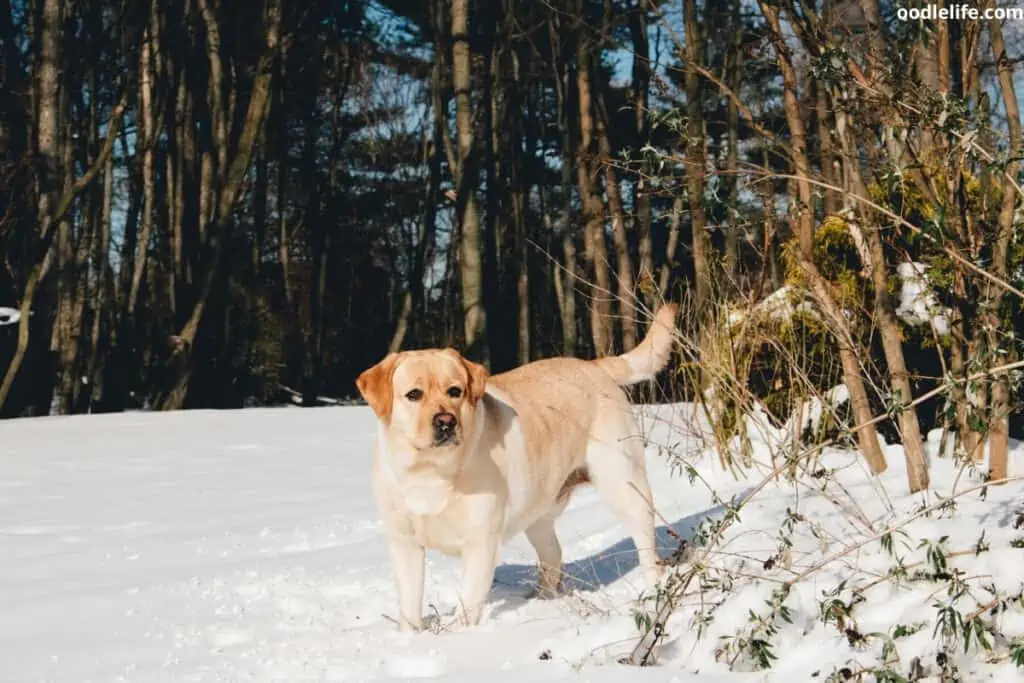
The Basenji, often known as the Barkless Dog, showcases its aloof nature by not seeking to please everyone. This trait gives them an air of independence, making them talented hunters as they don’t need constant supervision. Their ability to work autonomously is undoubtedly an asset in their hunting endeavors.
On the other hand, the Labrador Retriever is a prime example of an excellent hunting dog. They’re versatile, energetic, and more than capable of handling various tasks in the field. Some might even call them the “Swiss Army knife” of hunting dogs, able to retrieve like a pro and take on new challenges with enthusiasm.
Now, let’s talk about guard dogs. The Dogo Argentino is not just a superb hunting breed but also an outstanding guard dog. Traditionally bred for big-game hunting, such as wild boar, this pack-hunting dog’s intelligence and watchfulness make it a reliable protector for your home.
Another example of a proven guard dog is the Great Dane. Despite their gentle nature, the “Apollo of dogs” stands out for their regal stature and keen protective instincts. They don’t call them “gentle giants” for nothing!
In conclusion, these working dogs and hunting breeds exhibit the finest qualities of dedication, intelligence, and independence. The next time you see a Basenji making its own decisions or a Labrador Retriever taking on new challenges, remember that their aloof nature is what makes them truly exceptional. And let’s not forget our gentle giant guard dogs – the Great Dane and Dogo Argentino, who always keep a watchful eye.
The world of working dogs and hunting breeds is indeed a diverse and fascinating one.
Aloof versus Affectionate Breeds
When it comes to canine companionship, there are generally two types: aloof dogs and affectionate breeds. Some people say dogs are like Velcro, while others believe their furry friends prefer to be lone wolves.
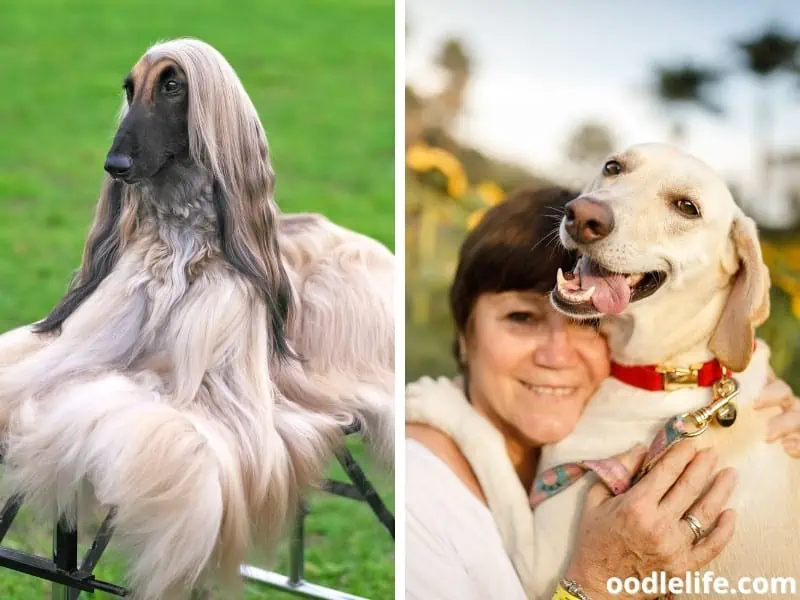
Aloof dogs, such as the Afghan Hound, tend to crave independence and may sometimes come off as regal or even snobbish. Don’t take it personally – they still love you! They just prefer to express it on their terms.
When they do show affection, it may be more like a royal granting an audience with a subject, rather than a full-on cuddle session.
On the other hand, affectionate breeds are quite the opposite. These “Velcro dogs” practically live for snuggles, cuddles, and all the physical displays of love a human could ask for. Imagine coming home every day to a dog that is literally leaping with joy just to see you.
That’s the life of a Velcro dog owner.
When you’re considering which type of dog to bring home, think about the kind of lifestyle you have. If you’re a homebody who loves cozy evenings on the couch, an affectionate breed might be your perfect match. However, if you prefer a hands-off approach and appreciate a dog that can entertain itself, you might be happier with an aloof breed.
In conclusion, whether you choose an aloof or affectionate breed, the love and companionship these four-legged friends offer are unmatched. Just remember that, like people, every dog has its own personality – so it’s essential to find the right match. Happy dog hunting!
Separation Anxiety and Other Challenges
Separation anxiety is a common issue for some dog breeds, causing them to exhibit undesirable behaviors such as excessive barking, destructive chewing, and persistent howling when left alone. However, the 11 breeds we’re discussing in this article are known for their aloof nature and ability to handle being left alone for longer periods.
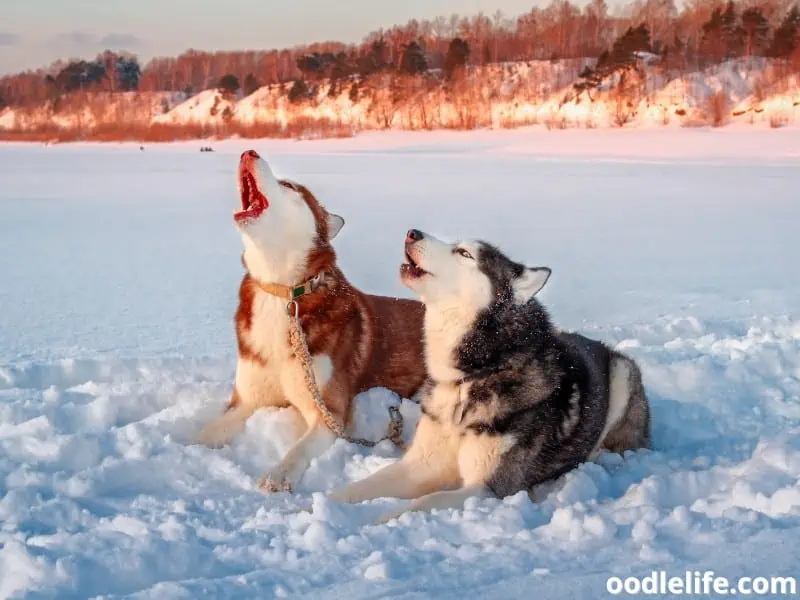
For example, the Labrador Retriever, despite being one of the most popular dog breeds, can actually experience separation anxiety. On the other end of the spectrum, the Boston Terrier is known for its laid-back nature and independence, making it less likely to suffer from separation anxiety.
When considering an aloof dog breed, owners should be prepared to manage other challenges that may come with these personality traits. For instance, a highly independent dog may be less interested in cuddling or playtime than a more affectionate breed. In some cases, this independence can also translate to stubbornness, making training more challenging.
In order to prevent or manage separation anxiety in less independent breeds, consistent training, proper socialization, and creating a comfortable environment for the dog when they’re home alone can be beneficial strategies. It’s also important to remember that each dog is an individual, so even within these aloof breeds, there may be some who experience separation anxiety or other challenges.
Finding the right balance of independence and companionship in a dog breed can be like searching for a needle in a haystack, or more accurately, a chew toy in a dog park. Understand your specific needs and expectations before committing to a new furry friend, and remember that with proper care, understanding, and patience, even the most aloof dog breed can become a loyal and loving companion that you can leave home without worry.
American Kennel Club and Purebred Dog Registry
The American Kennel Club (AKC) is a well-known organization that is dedicated to the world of purebred dogs. This club has a long history, dating back to 1884, and has established itself as the primary authority when it comes to registering purebred dogs in the United States. The AKC not only registers purebred pooches, but also provides resources, education, and events for dogs and their human companions.
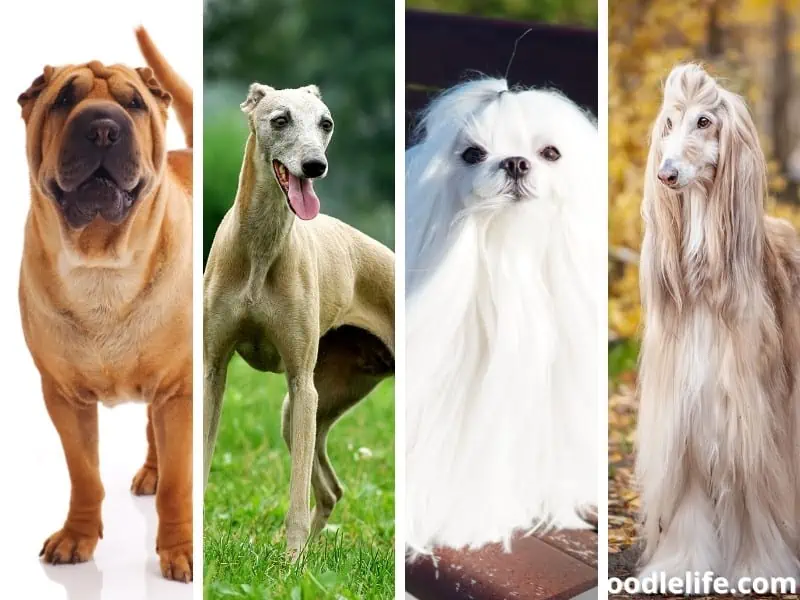
When it comes to aloof dog breeds, you may be wondering how the AKC plays a role. Well, the AKC maintains a breed standard for each of the purebred dogs it recognizes. These breed standards include everything from appearance and size to temperament and behavior.
This means that you can find information on which breeds are more naturally aloof or independent, simply by referencing AKC materials.
Now, let’s dive into the world of aloof dog breeds a little deeper. Here are a few examples of breeds recognized by the AKC that are known for their independent and sometimes aloof personalities:
- Afghan Hound: With a glamorous appearance and an air of regality, Afghan Hounds are often described as “cat-like” due to their reserved and independent nature.
- Basenji: Known as the “barkless” dog, the Basenji is a curious, intelligent breed that prefers to engage on their terms rather than being overly affectionate.
- Borzoi: Elegant and tall, the Borzoi may seem aloof to some, but their intelligence and reserved nature mean they just might not be as eager to please as some other breeds.
- Chow Chow: With a lion-like appearance, these dignified and serious dogs can be independent, making them better suited for experienced dog owners.
And the list goes on. The AKC provides valuable information on each breed’s natural temperament, so if you’re in pursuit of an aloof canine companion, the AKC’s breed profiles are definitely the paws-down best starting point. Just remember, no two dogs are exactly alike, and an individual dog’s personality can vary from the general breed descriptions.
So, if you’re looking to adopt an aloof dog, don’t be surprised if a sneaky snuggle or affectionate gaze slips through their cool exterior.